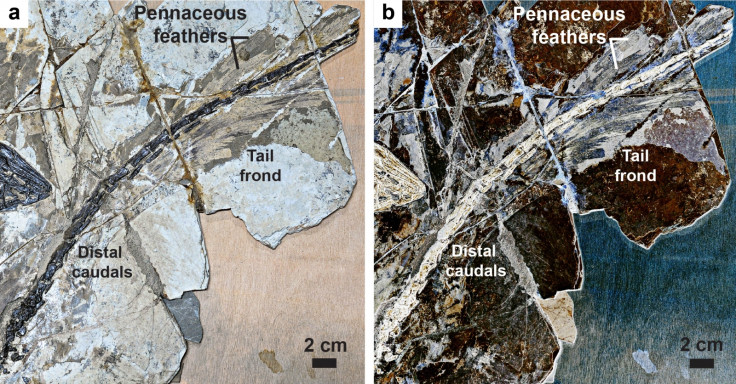145m-year-old feathered dinosaur sheds light on the origin of flight
The discovery shows that advanced aerodynamic feathers evolved much earlier than thought.
An almost complete skeleton of a feathered dinosaur has been discovered in north-east China. It is the earliest dinosaur with advanced aerodynamic feathers discovered so far.
The dinosaur is from a group called the troodontids and has been named Jianianhualong tengi. It was discovered in Baicai Gou, Liaoning Province, and lived in the Cretaceous period between 100 and 145-million-years-ago.
Jianianhualong tengi was about a metre long, with large feathers on its front and back limbs and tail. The discovery is reported in the journal Nature Communications.
Its tail feathers are perhaps the most interesting thing about Jianianhualong tengi. It is the earliest troodontid discovered with asymmetric feathers. One side, or vane, of the feather sticking out from the central shaft is longer than the other side. This is a crucial feature of feathers adapted to flying: the asymmetric flow of air over and underneath the feather is what gives it lift.
"Feather asymmetry has been suggested to be closely correlated with flight capability," write the study authors, led by Michael Pittman of the Department of Earth Sciences of the University of Hong Kong.
"The appearance of asymmetrical vanes in flight feathers has been considered to represent one of the major events in feather evolution."
This asymmetry helped the dinosaur to pitch the airflow over the feather. This could have helped the dinosaur get around either on the ground or in the air. It's not certain whether Jianianhualong was a fully fledged flying dinosaur or whether it was confined to the ground, the authors write.
The tail feathers are reminiscent of the iconic Archaeopteryx, the authors write. This was the transitional dinosaur between feathered dinosaurs and modern birds, known as the 'first bird'. The finding suggests that many early birds and bird-like dinosaurs had this frond-like arrangement of tail feathers.

The discovery also reveals the process of how these traits crucial for flight evolved. Some parts of the body evolved before others, leading to a skeleton that looks a bit mismatched. The long arms and the hips of the dinosaur are like its ancestors, but its skull and hind limbs are more like those of the advanced troodontids.
"The discovery of tail feathers with asymmetrical vanes in a troodontid theropod adds significant new information on feather evolution."
Study authors Pittman and Xing Xu, also of the University of Hong Kong, are offering a free online course, Dinosaur Ecosystems, for palaeontology enthusiasts.

© Copyright IBTimes 2025. All rights reserved.






















